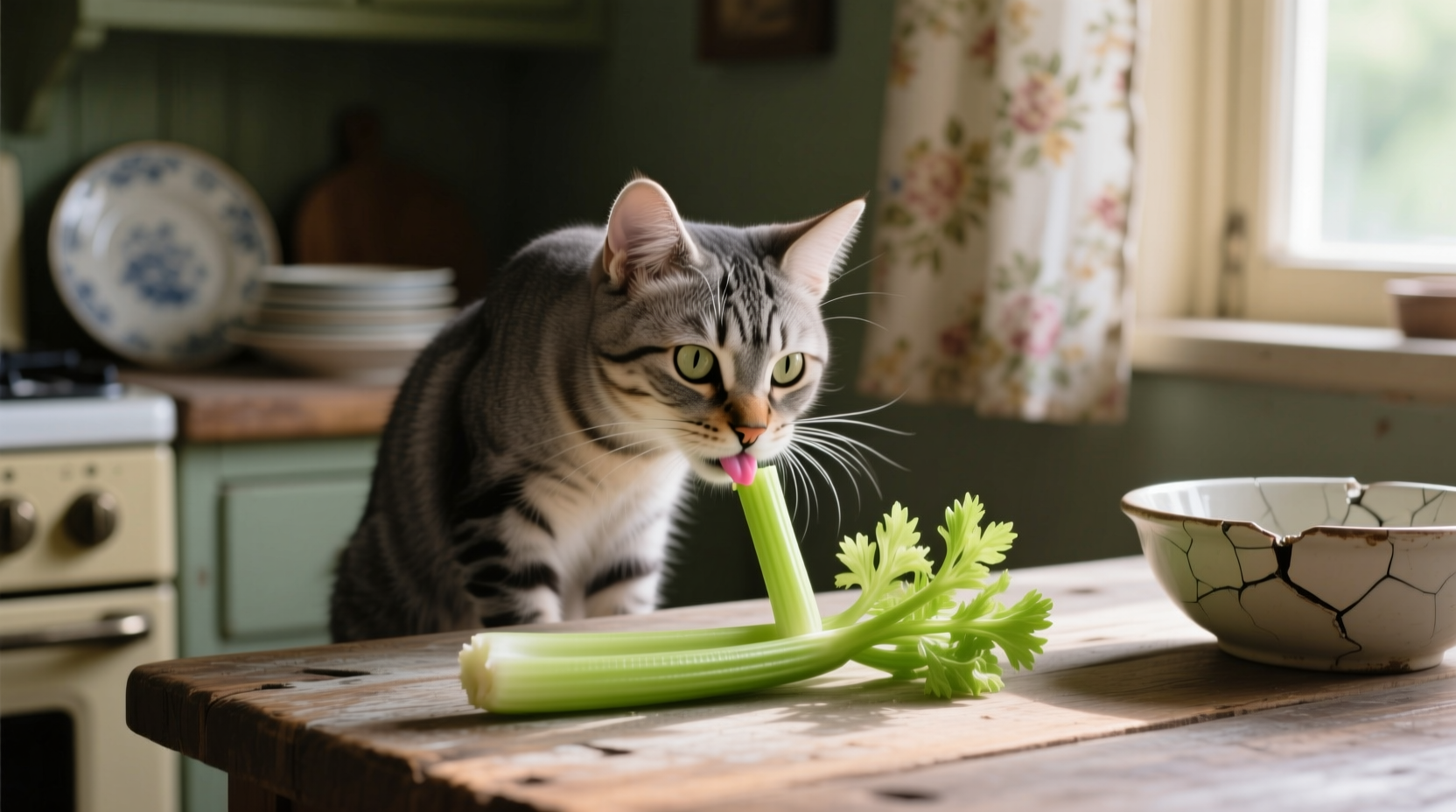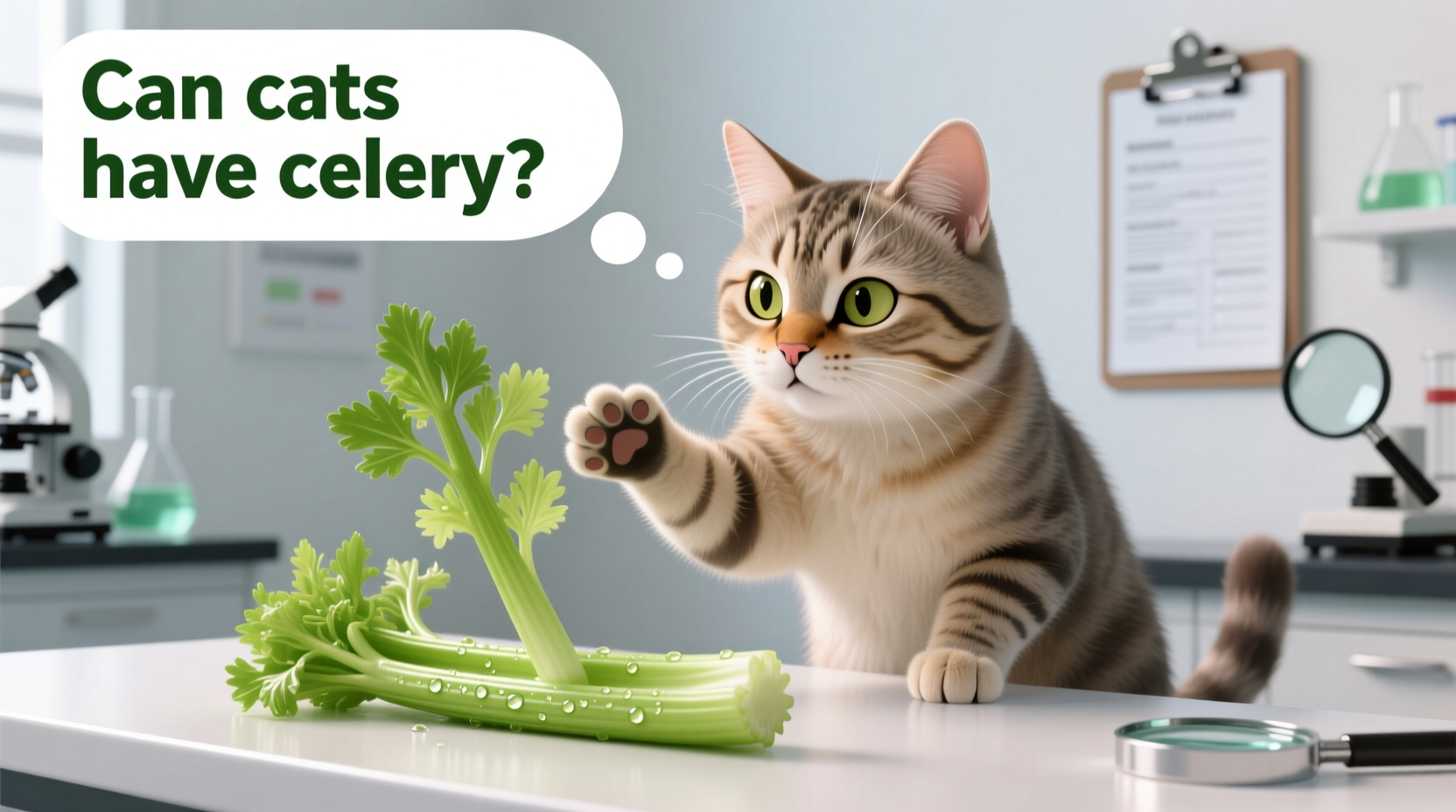Yes, cats can safely consume small amounts of celery as an occasional treat, but it should never replace their primary meat-based diet. While non-toxic, celery offers minimal nutritional value for obligate carnivores and poses potential choking hazards from its fibrous strings. Always consult your veterinarian before introducing new foods to your cat's diet.
As a responsible cat owner, you've likely wondered about sharing human foods with your feline companion. When it comes to can cats have celery, the answer requires careful consideration of feline physiology and nutritional needs. Unlike humans, cats are obligate carnivores with digestive systems designed primarily for meat consumption. While celery won't poison your cat, understanding the proper context for offering this crunchy vegetable is essential for your pet's wellbeing.
Understanding Celery's Safety Profile for Cats
Celery ranks among the safer human foods you might consider sharing with your cat. According to the ASPCA Animal Poison Control Center, celery doesn't contain any compounds toxic to cats. However, safety doesn't equate to nutritional value or appropriateness as a regular dietary component.
The primary concerns with feeding celery to cats include:
- Fibrous texture - Celery strings can pose choking hazards or cause intestinal blockages
- Digestive challenges - Cats lack the enzymes to efficiently break down plant cellulose
- Nutritional mismatch - Celery provides carbohydrates cats don't require in significant amounts
| Nutrient | Celery (per 100g) | Essential for Cats? | Cat's Daily Requirement |
|---|---|---|---|
| Protein | 0.7g | Essential | 25-30g |
| Fat | 0.2g | Essential | 9-15g |
| Carbohydrates | 3g | Non-essential | Minimal |
| Vitamin A | 21μg | Essential | 900μg |
| Taurine | 0mg | Critical | 200mg |
This nutritional comparison clearly demonstrates why celery shouldn't form a significant part of your cat's diet. While it contains some vitamins, the amounts are negligible compared to what cats require, and it completely lacks taurine - an amino acid critical for feline heart and eye health that must come from animal sources.
Practical Guidelines for Offering Celery to Cats
If you decide to offer celery as an occasional treat, follow these veterinarian-recommended practices:
- Prepare properly - Remove all fibrous strings and cut into pea-sized pieces to prevent choking
- Start small - Offer just 1-2 small pieces initially to monitor for adverse reactions
- Limit frequency - No more than once weekly as an occasional treat, not a regular snack
- Observe carefully - Watch for 24 hours for signs of digestive upset like vomiting or diarrhea
- Never replace meals - Celery should constitute less than 1% of your cat's daily caloric intake
Many cat owners report their felines enjoy the crunchy texture of celery, but this doesn't indicate nutritional benefit. The American College of Veterinary Nutrition emphasizes that cats require animal-based proteins to meet their biological needs, and plant matter should only supplement, never substitute, their primary diet.

When Celery Becomes a Concern
Certain situations warrant extra caution or complete avoidance of celery for your cat:
- Kittens under 12 months - Their developing digestive systems are more sensitive
- Cats with kidney issues - Celery's natural sodium content may exacerbate conditions
- Senior cats - May have more difficulty processing plant fibers
- Cats with dental problems - Crunchy texture could cause discomfort
- Overweight cats - Empty calories provide no nutritional benefit
The Veterinary Information Network reports that while celery ingestion rarely causes emergencies, multiple cases of intestinal obstruction have occurred when cats consumed large quantities of fibrous plant material. If your cat shows persistent vomiting, lethargy, or loss of appetite after eating celery, contact your veterinarian immediately.
Better Vegetable Alternatives for Cats
If you're looking to provide vegetable-based treats, these options offer better nutritional profiles for cats:
- Cooked pumpkin - Excellent source of fiber for digestive health
- Steamed carrots - Softer texture with beta-carotene benefits
- Boiled green beans - Low-calorie option for overweight cats
- Cooked broccoli florets - In very small amounts, provides antioxidants
Remember that even these alternatives should only comprise a tiny fraction of your cat's diet. The European Pet Food Industry Federation guidelines confirm that cats require animal protein to meet their biological needs, with plant matter serving only as occasional supplementation.
Recognizing Digestive Distress After Celery Consumption
Should your cat consume celery, monitor for these potential signs of digestive upset:
- Excessive drooling (beyond normal)
- Repeated swallowing motions
- Loss of appetite lasting more than 12 hours
- Visible straining during elimination
- Unusual lethargy or hiding behavior
Most cats experience no issues with small amounts of properly prepared celery, but individual sensitivities vary. If concerning symptoms persist beyond 24 hours, contact your veterinarian for professional guidance rather than waiting to see if symptoms resolve.
Final Recommendations for Cat Owners
While can cats have celery is a common question among pet owners, the more important consideration is whether they should. As obligate carnivores, cats thrive on meat-based diets, and plant matter offers minimal nutritional benefit. If you choose to offer celery:
- Consult your veterinarian first, especially for cats with health conditions
- Always prepare by removing fibrous strings and cutting into tiny pieces
- Limit to no more than 1-2 small pieces once weekly as an occasional treat
- Never use celery as a dietary supplement or replacement for balanced cat food
- Monitor closely for any adverse reactions after introduction
For optimal feline health, focus on high-quality commercial cat foods that meet AAFCO nutritional standards, with meat as the primary ingredient. Treats of any kind, including celery, should constitute no more than 10% of your cat's daily caloric intake.











 浙公网安备
33010002000092号
浙公网安备
33010002000092号 浙B2-20120091-4
浙B2-20120091-4